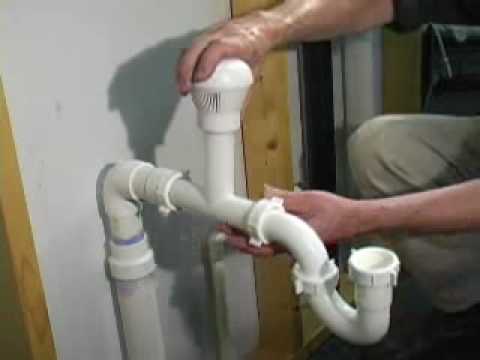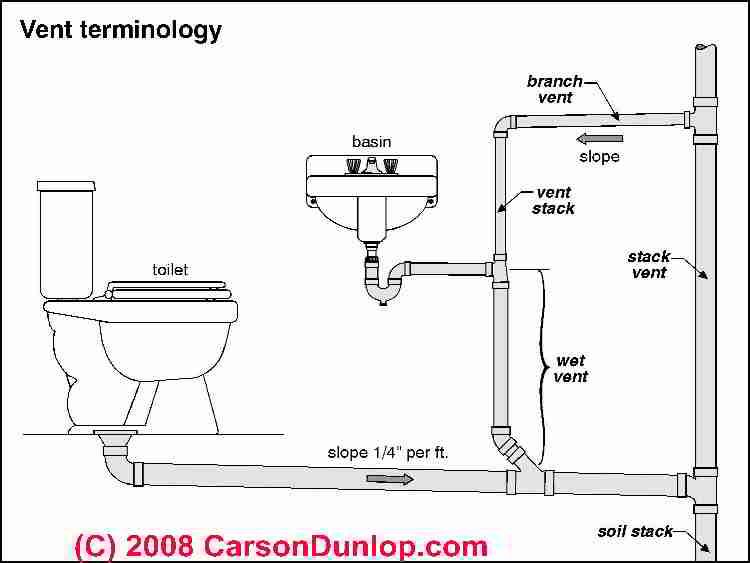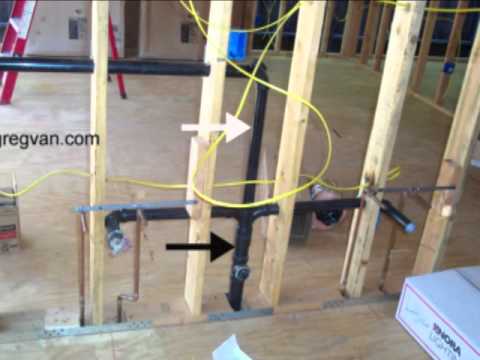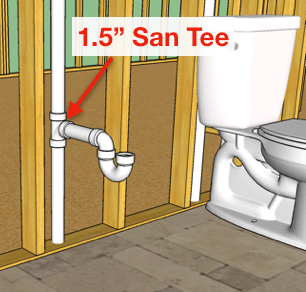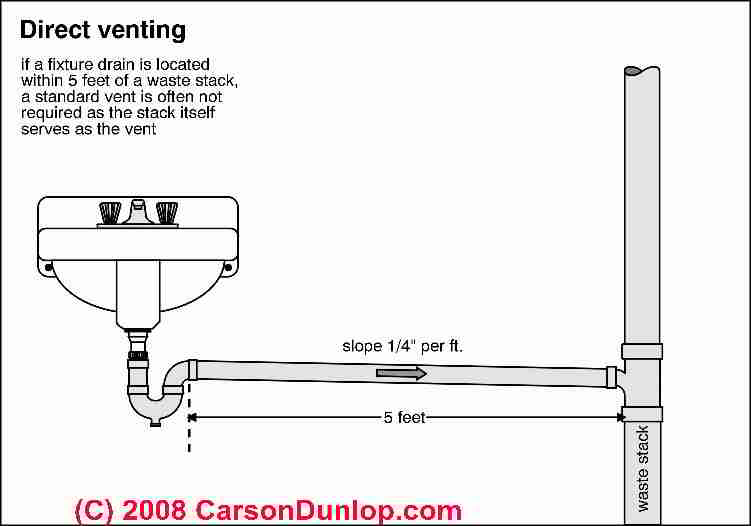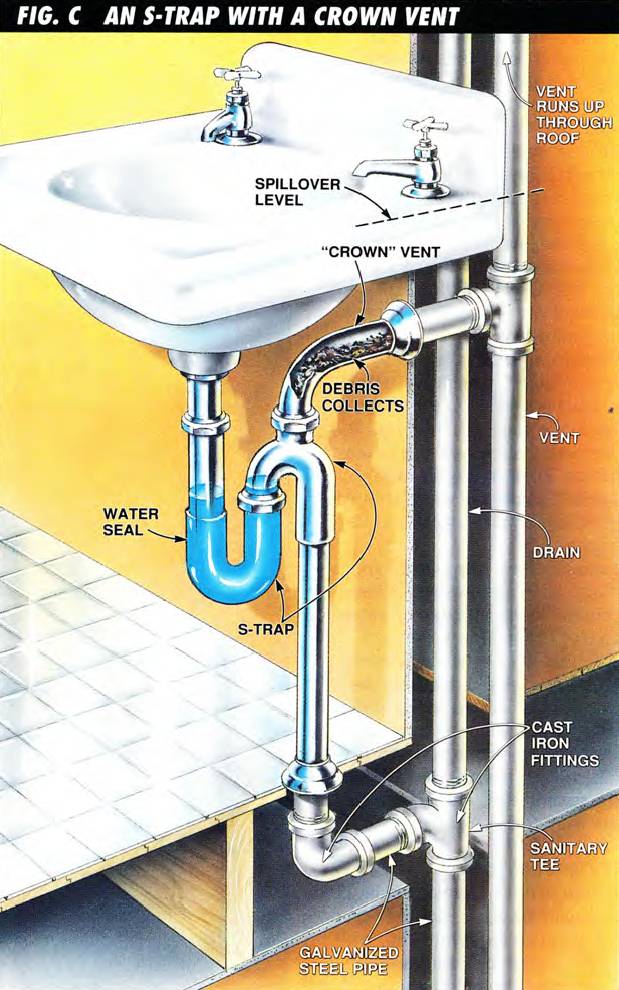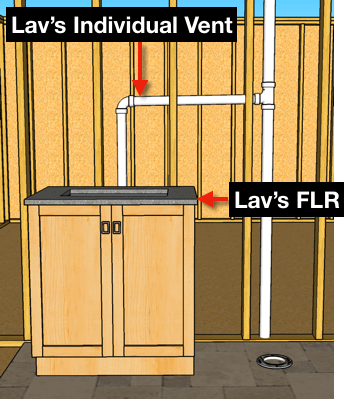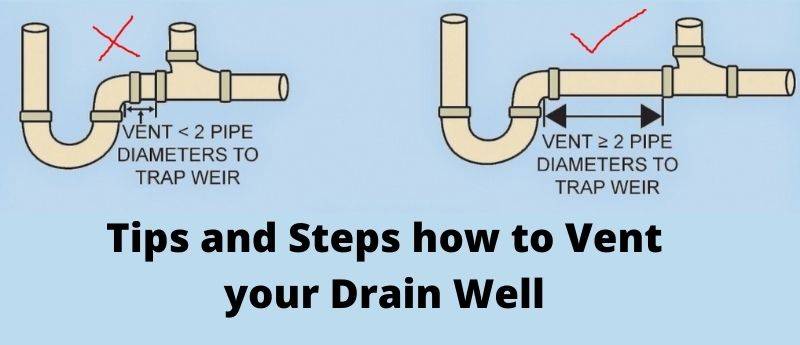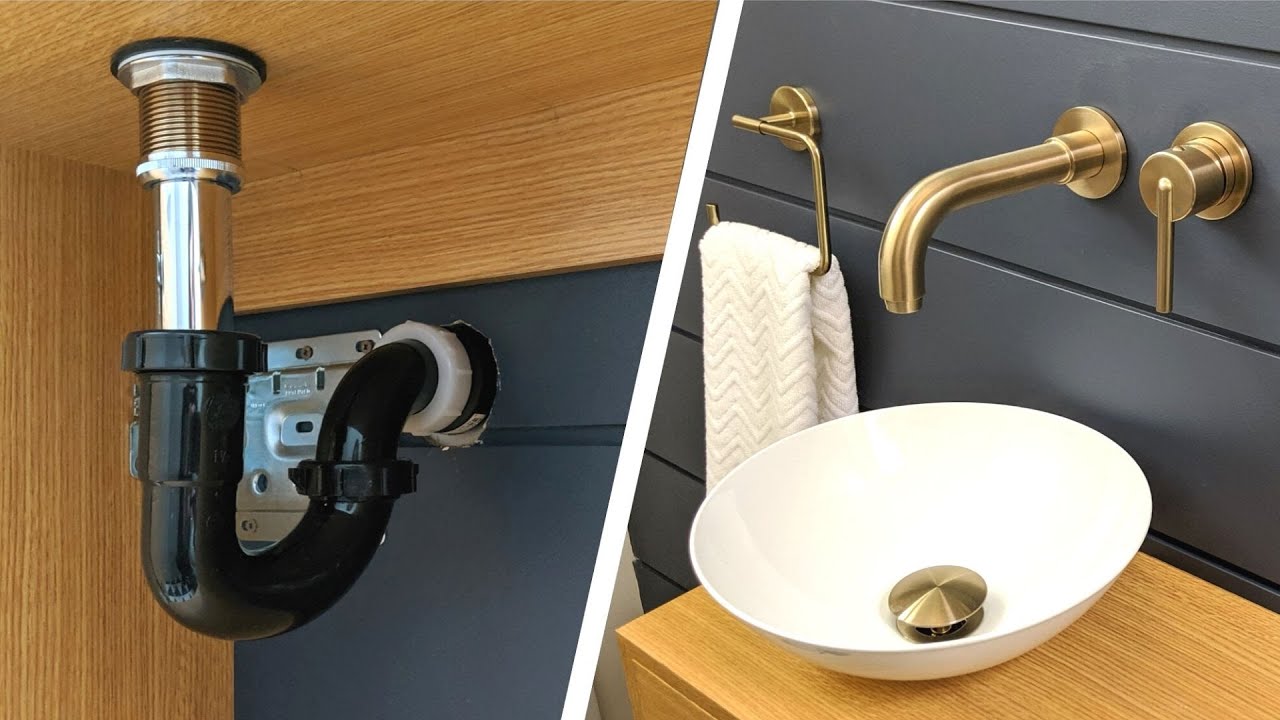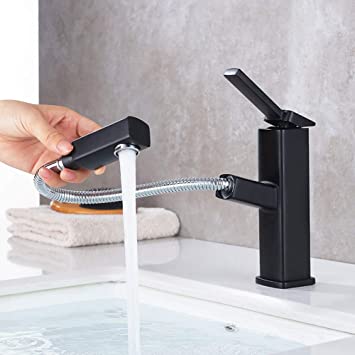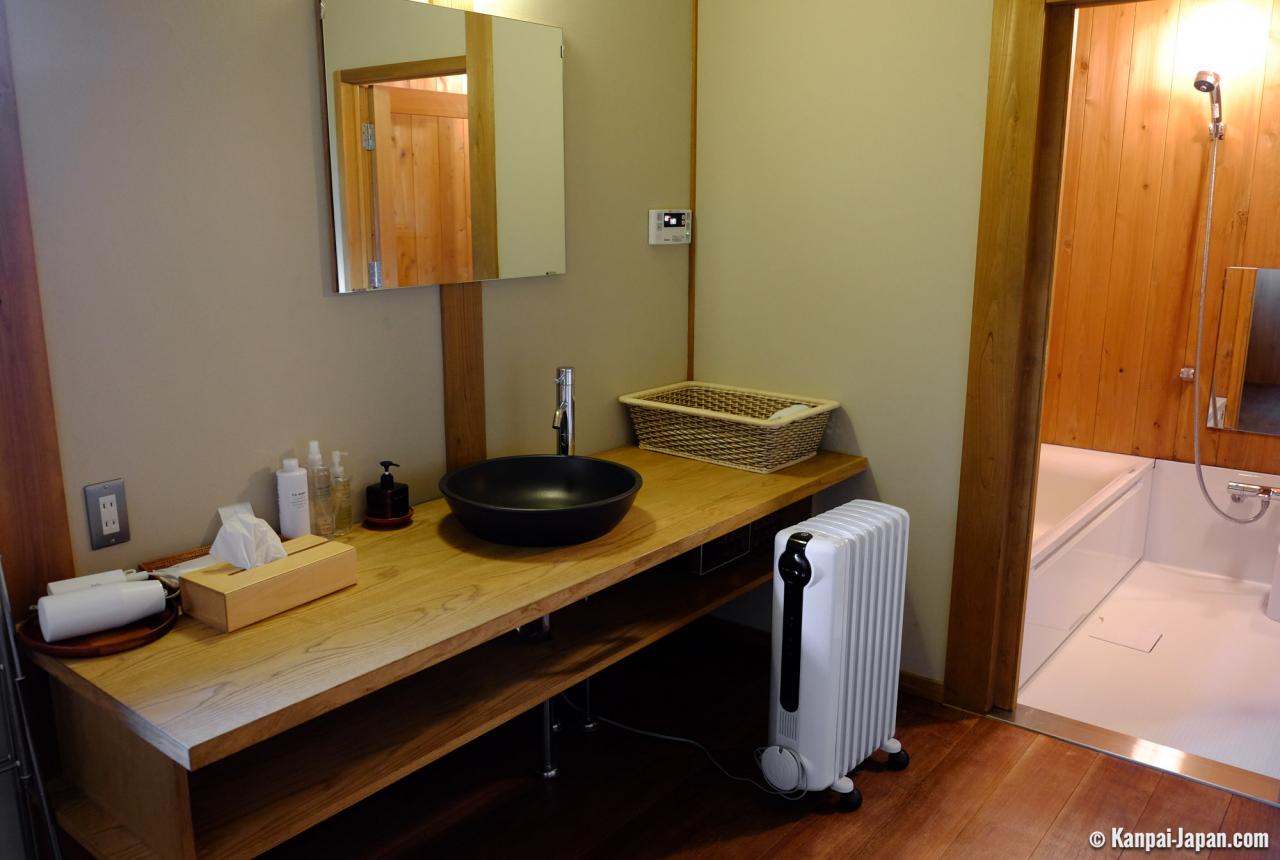Understanding the Importance of Proper Venting in a Bathroom Sink
Proper venting in a bathroom sink may not be something that homeowners often think about, but it plays a crucial role in maintaining the functionality and longevity of the plumbing system. Venting allows for the smooth flow of wastewater, prevents unpleasant odors, and helps prevent potential plumbing issues. Let’s discuss the importance of proper venting in a bathroom sink and how it contributes to a well-functioning plumbing system.
- Enhancing Drainage Efficiency: Proper venting in a bathroom sink ensures efficient drainage by allowing air to enter the plumbing system. This air flow prevents the formation of negative pressure, which can lead to slow drainage or even complete blockages. Without proper venting, water may struggle to flow down the drain, causing backups and potential damage to the pipes. A well-vented sink ensures that wastewater can flow freely, preventing clogs and reducing the risk of costly repairs.
- Eliminating Odor Issues: One of the most unpleasant experiences in a bathroom is encountering foul odors coming from the sink drain. This can occur when there is improper venting in the plumbing system. Without adequate ventilation, sewer gases can accumulate in the pipes, resulting in foul-smelling odors that permeate the bathroom. Proper venting allows these gases to escape to the outside, keeping the bathroom fresh and odor-free.
- Preventing Damage to Fixtures and Pipes: Improper venting in a bathroom sink can lead to excessive pressure buildup in the plumbing system. This pressure can cause damage to fixtures, such as cracked or burst pipes, leading to leaks and water damage. Additionally, without proper venting, water flow can become turbulent, resulting in increased wear and tear on the pipes, reducing their lifespan. By ensuring proper venting, homeowners can protect their fixtures and pipes from unnecessary damage and costly repairs.
- Minimizing Noise and Gurgling Sounds: A bathroom sink that is not properly vented may produce gurgling or bubbling sounds when water is drained. These noises occur due to air being pulled into the system through the sink’s trap or other fixtures. Proper venting allows for the smooth flow of wastewater without any disruptive sounds. By ensuring proper venting, homeowners can enjoy a quiet and peaceful bathroom experience.
- Compliance with Building Codes: Proper venting in a bathroom sink is not just a matter of convenience and functionality; it is also a requirement in many building codes and regulations. These codes are put in place to ensure the safety and well-being of homeowners. When renovating or installing a new bathroom sink, it is crucial to adhere to these codes to avoid potential legal issues and complications down the road.

The Role of Venting in Preventing Plumbing Issues in Bathroom Sinks
Proper venting in a bathroom sink goes beyond just ensuring smooth drainage and preventing odors. It plays a crucial role in preventing various plumbing issues that can arise if the venting system is inadequate or improperly installed. We will explore the role of venting in preventing plumbing issues in bathroom sinks and how homeowners can avoid potential problems.
Preventing Clogs and Blockages: One of the primary functions of venting in a bathroom sink is to prevent clogs and blockages in the plumbing system. Without proper venting, negative pressure can build up, impeding the flow of wastewater and causing debris to accumulate in the pipes. Over time, this debris can form blockages that restrict or completely stop the flow of water. By ensuring proper venting, homeowners can minimize the risk of clogs and blockages, keeping their bathroom sinks functioning smoothly.
Avoiding Siphoning and Trap Seal Loss: Improper venting can lead to siphoning, a process where water is pulled out of the sink’s trap, resulting in an empty or dry trap. The trap is designed to hold water, creating a barrier between the plumbing system and the sewer gases. When the trap seal is lost due to siphoning, foul odors can enter the bathroom, and the risk of sewer gases entering the living space increases. Proper venting prevents siphoning and helps maintain the integrity of the trap seal, ensuring a healthy and safe bathroom environment.
Reducing the Risk of Pipe Corrosion: Poor venting can also contribute to pipe corrosion in a bathroom sink. When wastewater is not properly vented and flows turbulently, it can cause increased friction and pressure within the pipes. Over time, this can lead to the corrosion of the pipes, resulting in leaks and potential water damage. By ensuring proper venting, homeowners can minimize the risk of pipe corrosion and extend the lifespan of their plumbing system.
Preventing Water Hammer: Water hammer is a phenomenon that occurs when water suddenly stops or changes direction within the plumbing system, causing a loud banging or hammering noise. Improper venting can contribute to water hammer by restricting the airflow and creating pressure imbalances. These pressure imbalances can lead to violent water movements, resulting in the noisy and potentially damaging water hammer effect. Proper venting helps maintain balanced pressure within the plumbing system, preventing water hammer and its associated issues.
Maintaining Proper Ventilation: In addition to preventing specific plumbing issues, proper venting in a bathroom sink ensures proper ventilation throughout the plumbing system. Adequate airflow helps remove excess moisture, preventing the growth of mold and mildew, which can cause health issues and damage to the bathroom. It also helps maintain a healthy indoor environment by preventing the accumulation of harmful gases and chemicals.
Exploring Different Venting Options for Bathroom Sink Drains
When it comes to venting a bathroom sink drain, there are various options available, each with its own advantages and considerations. Proper venting is crucial for ensuring the optimal performance of the plumbing system and preventing issues such as clogs, odors, and damage. Below are different venting options for bathroom sink drains, helping homeowners make informed decisions about their venting needs.
Individual Fixture Vent: The individual fixture vent is a commonly used venting option for bathroom sink drains. In this setup, each fixture, including the bathroom sink, is individually vented. This entails installing a separate vent pipe connected to each fixture’s drainpipe. The individual fixture vent provides dedicated ventilation for each fixture, ensuring efficient drainage and preventing issues such as negative pressure and trap seal loss. It is a reliable and versatile option for bathroom sink venting, especially in situations where other venting options may not be feasible.
Common Vent: In situations where individual fixture venting is not practical or feasible, a common vent system may be employed. With a common vent, multiple fixtures, including bathroom sinks, share a single vent pipe. The vent pipe connects to the main stack or vent stack, allowing for the release of sewer gases and equalizing air pressure within the plumbing system. Common venting can be advantageous in terms of cost and space savings. However, it requires careful planning and sizing to ensure proper ventilation for all fixtures and to avoid potential issues such as inadequate venting or excessive pressure imbalances.
Air Admittance Valve (AAV): An alternative to traditional venting methods is the use of an Air Admittance Valve (AAV). An AAV is a mechanical device that allows air to enter the plumbing system and equalize pressure, eliminating the need for a dedicated vent pipe. AAVs are typically installed under the sink or within the wall cavity and are designed to open and close in response to changes in air pressure. They provide a convenient and space-saving solution for venting bathroom sinks, especially in situations where vent pipe installation is challenging or not possible. However, it is important to note that AAVs have specific code requirements and must be installed properly to ensure their effectiveness.
Studor Vent: Similar to an AAV, a Studor Vent is a mechanical device that eliminates the need for traditional venting. It is typically installed within a wall cavity or under the sink. The Studor Vent allows air to enter the plumbing system when needed, preventing pressure imbalances and maintaining proper ventilation. It is a reliable option for venting bathroom sinks, especially in situations where vent pipe installation is difficult or costly. However, like AAVs, Studor Vents must be installed according to code requirements and manufacturer specifications to ensure their proper functioning.
Combination Venting Systems: In some cases, a combination of venting methods may be employed to achieve optimal venting for bathroom sinks. For example, a combination of individual fixture vents, common vents, and AAVs or Studor Vents may be used depending on the specific plumbing layout and requirements. Combination venting systems allow for flexibility and customization, ensuring proper ventilation while considering factors such as space limitations and cost-effectiveness.
Common Signs of Poor Venting in Bathroom Sinks and How to Address Them
Proper venting is essential for maintaining the functionality and efficiency of a bathroom sink. When venting is inadequate or compromised, various signs and issues can arise, impacting the performance of the sink and the overall plumbing system. Here are common signs of poor venting in bathroom sinks and a guide on how to address these issues effectively.
Slow Drainage: One of the most noticeable signs of poor venting in a bathroom sink is slow drainage. If the sink takes longer than usual to empty or if you notice standing water in the sink after use, it indicates that air is not flowing freely through the drainpipe due to inadequate venting. To address this issue, check for any blockages in the drainpipe or vent pipe. Clear any debris or obstructions that may be impeding the airflow. If the problem persists, consider consulting a professional plumber to assess and improve the venting system.
Gurgling or Bubbling Sounds: Another common sign of poor venting in a bathroom sink is the presence of gurgling or bubbling sounds when water is drained. These noises occur when air is trapped in the drainpipe due to inadequate venting. As water flows down the drain, it displaces the trapped air, causing the gurgling or bubbling sounds. To address this issue, inspect the vent pipe for any blockages or obstructions that may be preventing the proper release of air. Clear any debris or consider installing an Air Admittance Valve (AAV) or a Studor Vent to improve the venting and eliminate the noises.
Foul Odors: Poor venting can also lead to foul odors emanating from the bathroom sink drain. Inadequate venting allows sewer gases to accumulate in the plumbing system, resulting in unpleasant smells in the bathroom. To address this issue, check for any blockages or obstructions in the vent pipe that may be causing the gases to accumulate. Clear any debris or consider installing an AAV or Studor Vent to effectively vent the system and prevent the odors from entering the living space.
Water Backing Up in Other Fixtures: If you notice water backing up in other fixtures, such as the bathtub or toilet, when you run the bathroom sink, it may indicate a venting problem. Inadequate venting can cause pressure imbalances in the plumbing system, leading to water being forced into other fixtures instead of draining properly. To address this issue, inspect the vent pipe for any blockages or obstructions that may be causing the pressure imbalances. Clear any debris or consider consulting a professional plumber to assess and improve the venting system.
Multiple Clogs and Blockages: Poor venting can contribute to multiple clogs and blockages in the bathroom sink drain. Inadequate airflow through the vent pipe can lead to slow drainage, debris accumulation, and increased risk of clogs. To address this issue, ensure that the vent pipe is clear of any obstructions or blockages. Clear any debris and consider improving the venting system by installing individual fixture vents or a common vent system, depending on the specific plumbing layout.
Expert Tips for Properly Venting a Bathroom Sink for Optimal Performance
Properly venting a bathroom sink is crucial for maintaining optimal performance and preventing plumbing issues. While venting requirements may vary based on local building codes and plumbing configurations, certain expert tips can help homeowners ensure effective venting for their bathroom sinks. Below are some tips for properly venting a bathroom sink to achieve optimal performance.
Understand Local Building Codes: Before embarking on any venting project, it is essential to familiarize yourself with the local building codes and regulations regarding venting requirements for bathroom sinks. Each jurisdiction may have specific guidelines regarding the number of vents, vent pipe sizes, and venting methods. Understanding these codes will ensure that your venting system meets the necessary standards and avoids potential legal issues in the future.
Consider Individual Fixture Venting: Individual fixture venting is often recommended for bathroom sinks, especially in new construction or major renovations. This approach involves installing a separate vent pipe for each fixture, including the bathroom sink. Individual fixture venting provides dedicated ventilation for each fixture, ensuring efficient drainage and preventing issues such as negative pressure and trap seal loss. Consider this option if it is feasible within your plumbing system.
Evaluate Existing Venting System: If you are dealing with an existing bathroom sink and venting system, evaluate its effectiveness and consider any necessary improvements. Inspect the vent pipe for any blockages, obstructions, or damage that may impede proper airflow. Clear any debris or consider consulting a professional plumber to address any issues. Additionally, ensure that the vent pipe is adequately sized to handle the expected flow and drainage requirements of the bathroom sink.
Utilize Air Admittance Valves (AAVs) or Studor Vents: Air Admittance Valves (AAVs) and Studor Vents are mechanical devices that can be used to improve venting in bathroom sinks. AAVs or Studor Vents are typically installed under the sink or within the wall cavity and allow air to enter the plumbing system, equalizing pressure and preventing negative pressure buildup. These devices are particularly useful when traditional vent pipe installation is challenging or not possible. Ensure that AAVs or Studor Vents are installed according to code requirements and manufacturer specifications for optimal performance.
Seek Professional Assistance: For complex venting projects or if you are unsure about the adequacy of your venting system, it is recommended to seek professional assistance from a licensed plumber or building professional. They can assess your specific plumbing layout, provide expert advice, and ensure that the venting system meets all requirements and standards.
How To Plumb a Bathroom (with multiple plumbing diagrams
Plumbing Vent Distances u0026 Routing Codes
How to properly add air vent to bathroom pop up drain Plumbing
Types of Plumbing Traps and How They Work – BestLife52
How To Plumb a Bathroom (with multiple plumbing diagrams
How to Vent a Kitchen Sink Drain: Steps with pipe Diagrams
Related Posts:
- Bathroom Sink Faucet Modern
- Bathroom Sink Drain Repair Kit
- Backsplash For Bathroom Sink Ideas
- Bathroom Sinks Phoenix Az
- Bathroom Sink Leaking At Base
- Is Bathroom Sink Water Safe To Drink
- Bathroom Sink Faucet Adapter
- Bathroom Sink Components
- Bathroom Sink And Tub Clogged
- Moen Bathroom Sink Faucets Brushed Nickel
